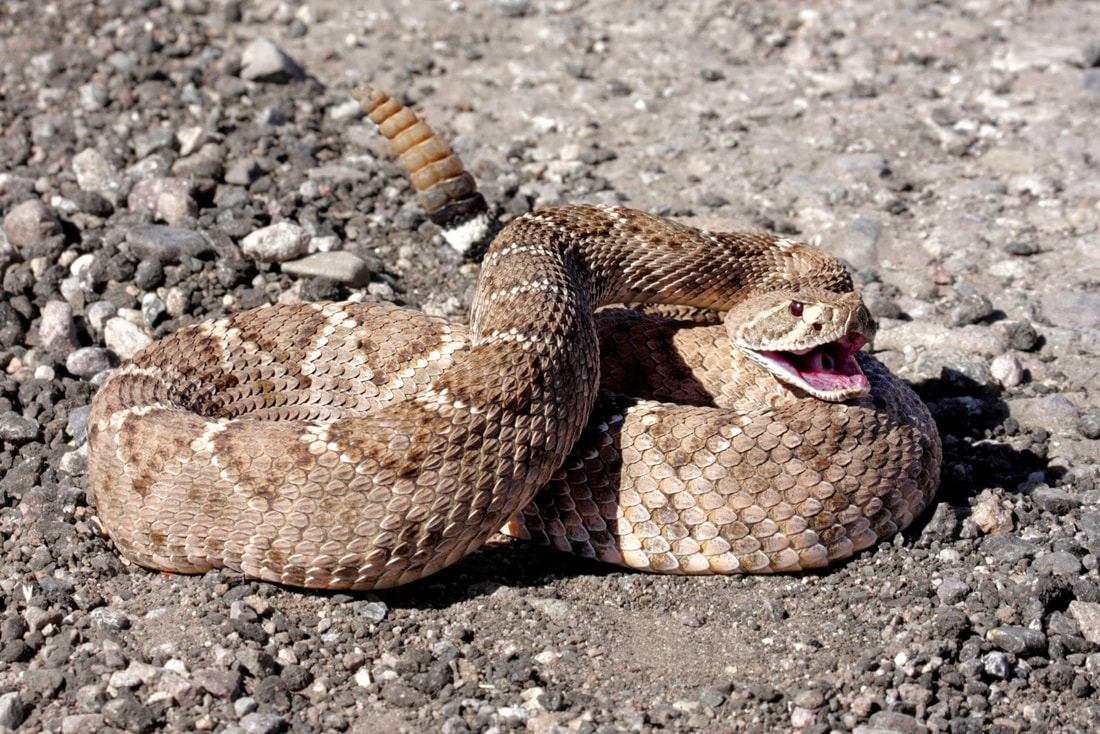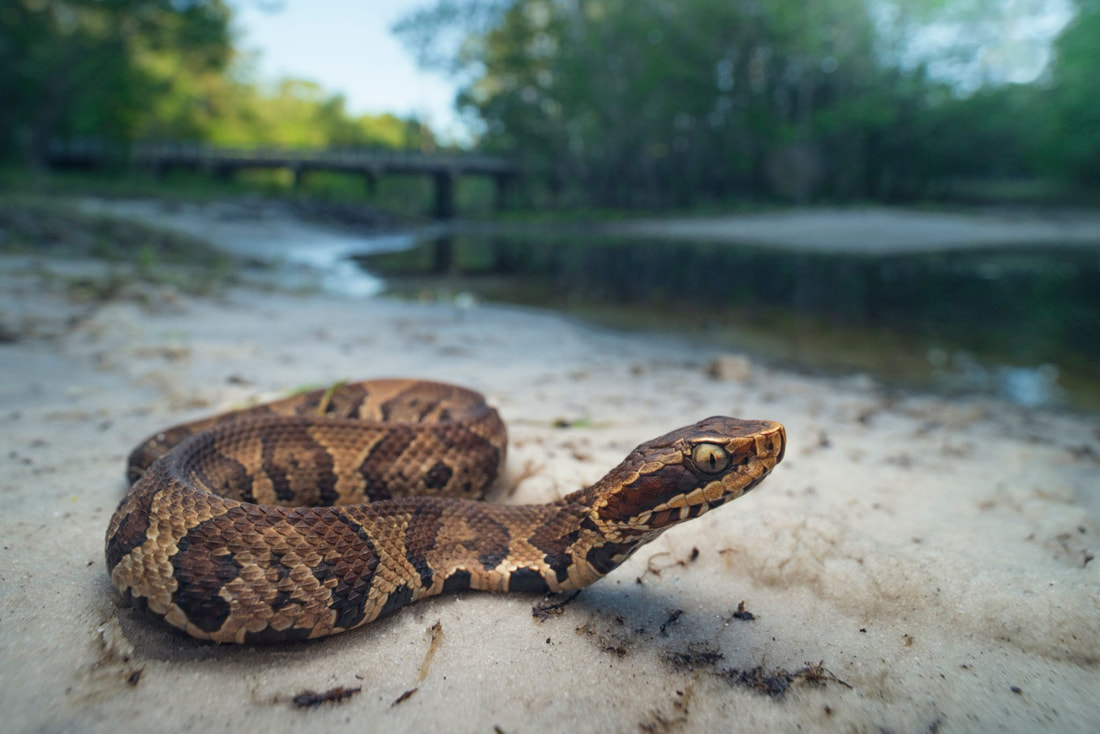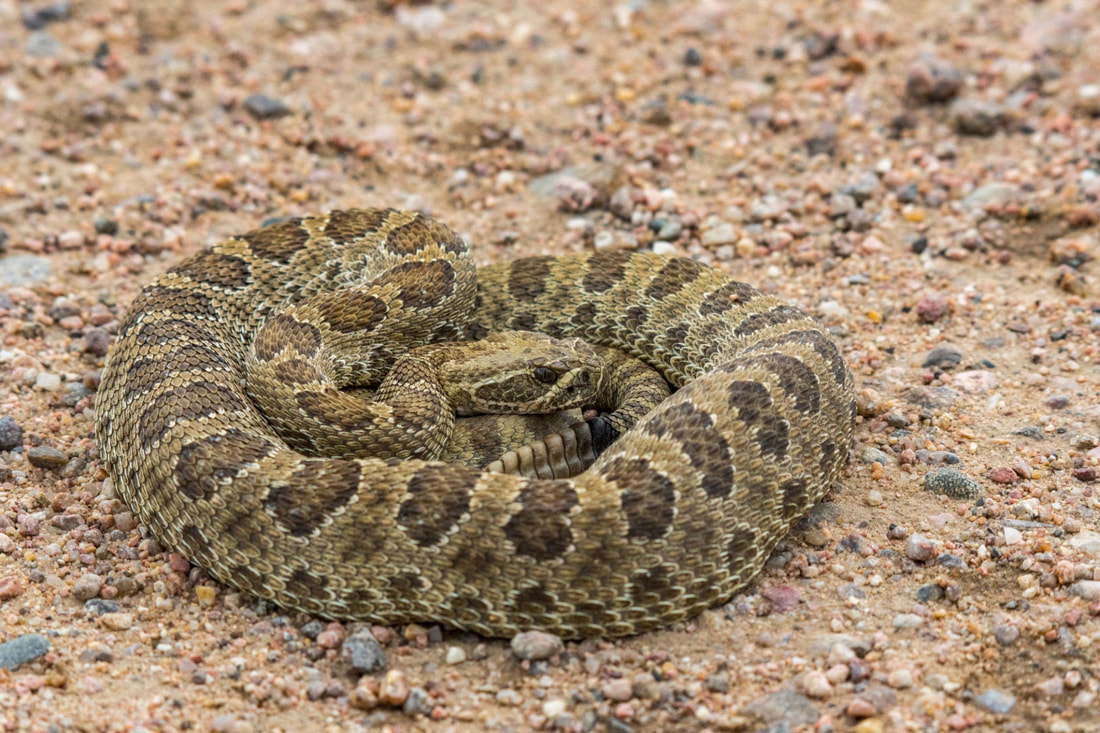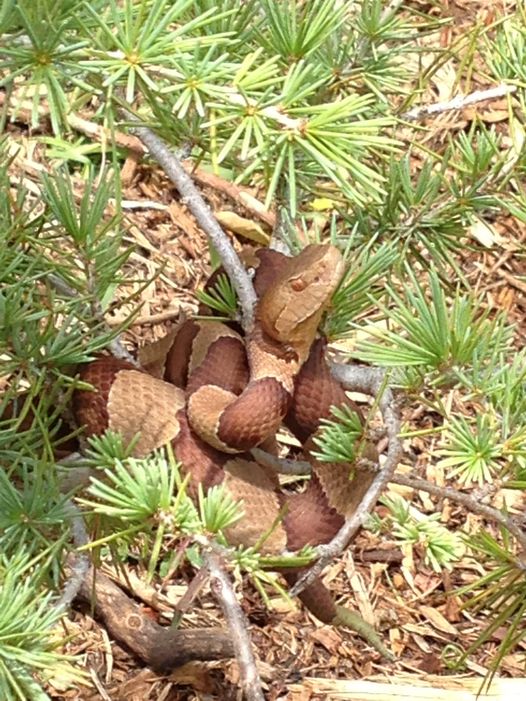|
One of my passions is helping to reduce people's stress level over snakes through education. You don't have to know every single species of snake, you only need to be able to ID the venomous ones. There is an old story about the captain of a ship entering an unfamiliar harbor that is well known for it hidden, shifting, and treacherous sandbars. He radios the Harbormaster and asks him to send out a pilot to guide them in safely. Soon a small boat pulls up and a 16 year old boy comes aboard. The Captain is dubious and asks the boy "Son, do you really know where all the sand bars are?" The boy responded "No sir, but I know where they ain't!" Snakes in Oklahoma are a lot like that. You don't need to know them all, but make sure you can identify the venomous ones. Oklahoma is blessed with 46 species of snakes. If those, only seven (15%) are potentially harmful to humans. If you lump the Western Diamondback, Timber Rattler, Prairie Rattler and the Massasauga together (the differences are purely academic) there are only four snakes you need to learn to identify. #1 Rattlesnakes The Diamondback, Timber, Prairie. and Massasauga rattlesnakes are very similar. The can get quite large, have a distinct rattle at the end of their tail, and a bite you want to stay clear of. Western Diamondback (AKA Coontail)  Timber Rattlesnake (AKA Canebrake or Velvet tail)  Massasauga Rattlesnake  Prairie Rattlesnake Again, the difference between these four are not of great importance to most people. If it has a rattle, give it a little extra room and you'll be fine. Please note: It may be possible that the rattlesnake' rattle has broken off. If in doubt, take the path of caution and leave it be! #2 Western Pigmy Rattlesnale I have separated the Pigmy Rattlesnake from the others as is a little less obvious. As the name implies, it is a very small snake (less than 20"). It is brightly colored and has a tiny rattle that isn't always easy to see, and is almost never heard. Once you learn to recognize the alternating brown and peach colored spots that run down its back, they are easy to identify. #3 Copperhead The copperhead is a beautifully marked snake. Their color starts out the bright copper color of a shiny penny and darkens with age, The markings on the side are often described as "Hershey's Kisses" due to their shape. The copperhead's venom is much milder than the other snakes listed here, but you still want to avoid them whenever possible. There is also a Broadbanded Copperhead that is marked a little differently. #4 Cottonmouth (AKA Water Moccasin) The Cottonmouth is perhaps the most misidentified snake in Oklahoma. I have followed up on dozens of reports of "sure 'nuf " Cottonmouths, but only one time was the snake properly identified. Most of the time, it is just one of the harmless watersnakes, and usually needlessly dead. The Cottonmouth can be marked similar to the Copperhead. Like the Copperhead, they also darken with age. The main difference is the band across the eyes. They are often described as looking like they are wearing sunglasses.  The Cottonmouth has a very distinct defensive posture. When they feel threatened, they are the only snake I am aware of that takes this pose. In this picture, you can see the distinctive white mouth that gives them their name. Note also the thick body and the sharply tapered tail.
A common myth is that Cottonmouths chase people. They do not. No snake does. All snakes would rather run than fight and will only bite as a last resort. When frightened, the snake wants to go to someplace where it feels secure, its "Happy Place", if you will. Sometimes that place is on the other side of you and the snake may run at you to get by you. This can give the misconception that the snake is chasing you. Another myth is that they lay in trees over water and jump into boats. Cottonmouths are poor climbers and spend most of their life at ground (or water) level. The Western, or Black, Ratsnake is often mistaken for a Cottonmouth and they are great climbers. They do hang out in trees and can occasionally lose their grip and fall. There are two "Rules of Thumb" for identifying venomous snakes. Both are wrong and could be potentially dangerous.
Summary Once you realize that the vast majority of snakes you encounter on a daily basis are harmless, and even the venomous ones want to run, not bite, it is easier to be less concerned about encountering a snake in the wild. Leave the snake alone and they will leave you alone. The vast majority of snake bites involve alcohol and the phrase "Hey Ya'll! Watch this!" You don't need to be able to identify all 46 species of snakes in Oklahoma. Just focus on the four groups above and the rest will not be a problem. If you are interested in learning more about snakes in Oklahoma, consider joining the Oklahoma Snake Identification Network on Facebook, https://www.facebook.com/groups/oklahomasnakeidnetwork/ They are very knowledgeable and have a lot of resources to help you learn to identify Oklahoma's snakes. If you have a picture of a snake you are not certain about, text it to me at (918) 397-4091 and I will help you ID it. If you have a snake, either venomous or non-venomous, that is in your home or anywhere else it shouldn't be, contact Predator Impact and we will relocate it to a new home. Predator Impact (918) 397-4091
0 Comments
Leave a Reply. |
AuthorMark Runnels is a professional engineer and owner of Predator Impact, LLC. Archives
May 2024
Categories |





 RSS Feed
RSS Feed